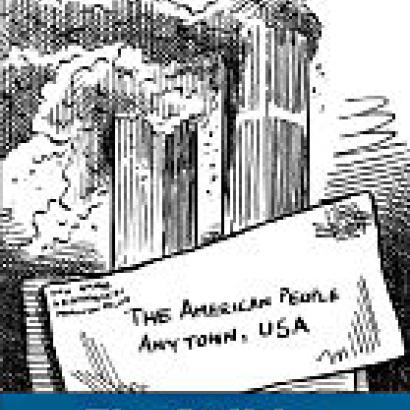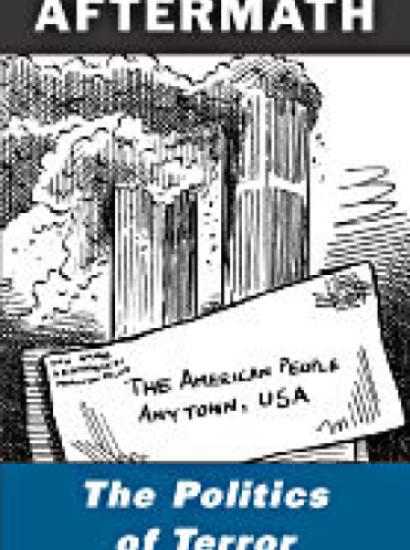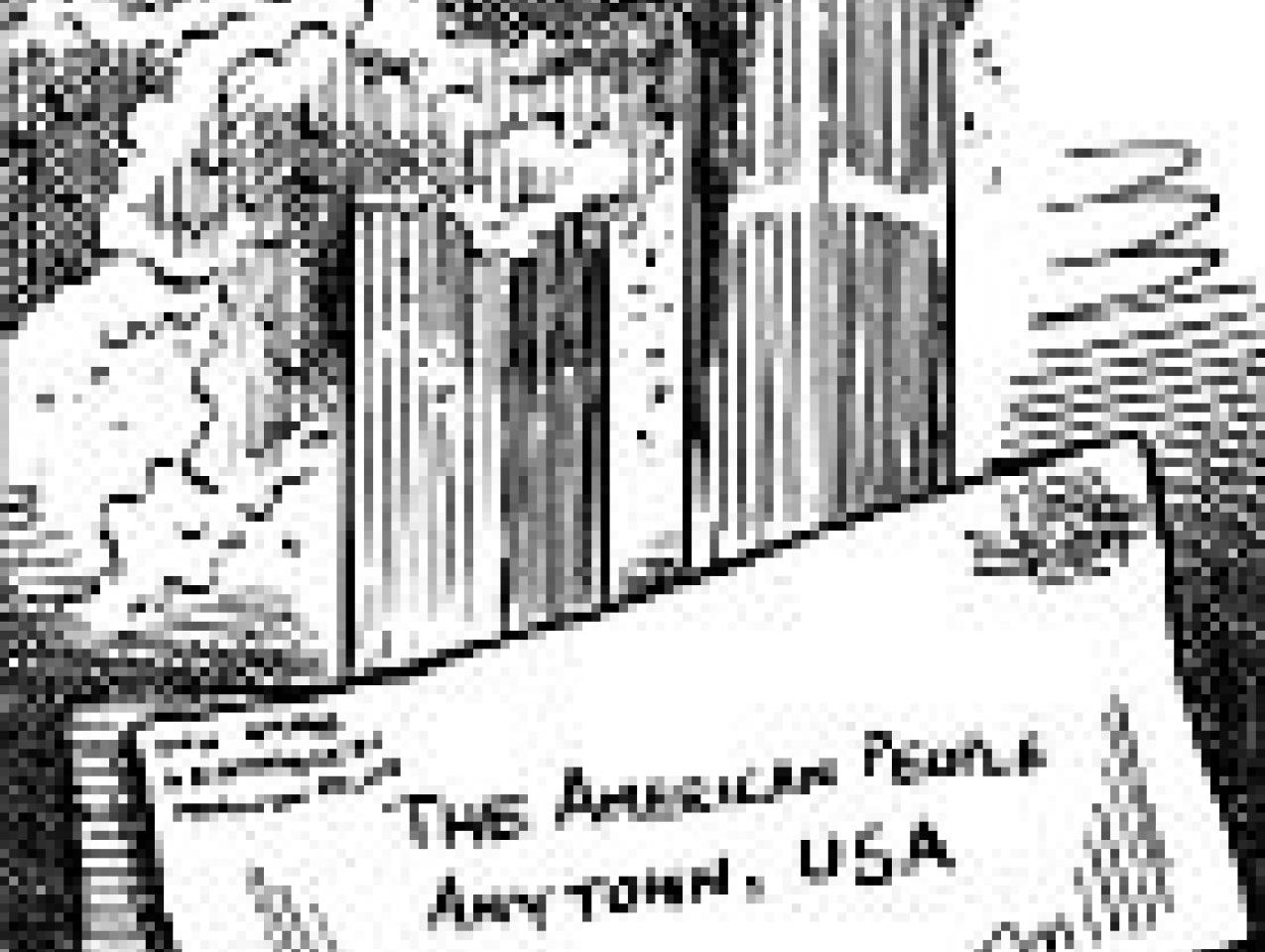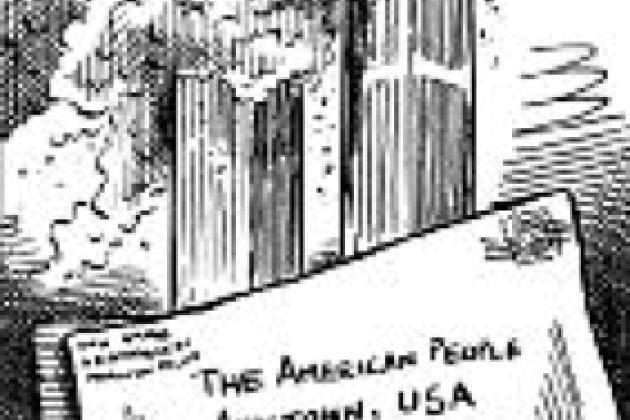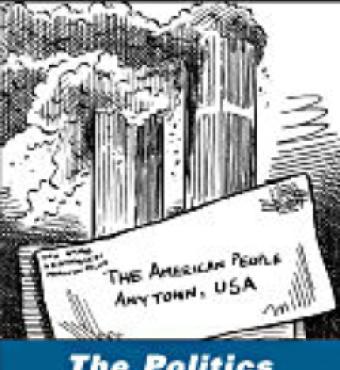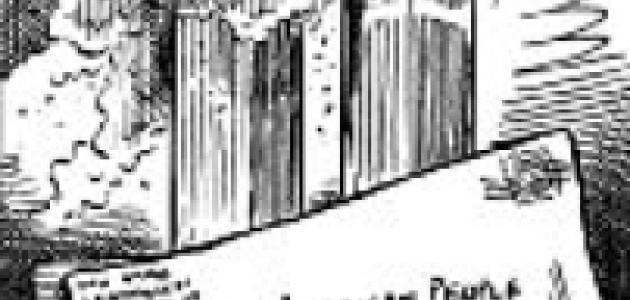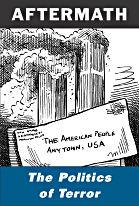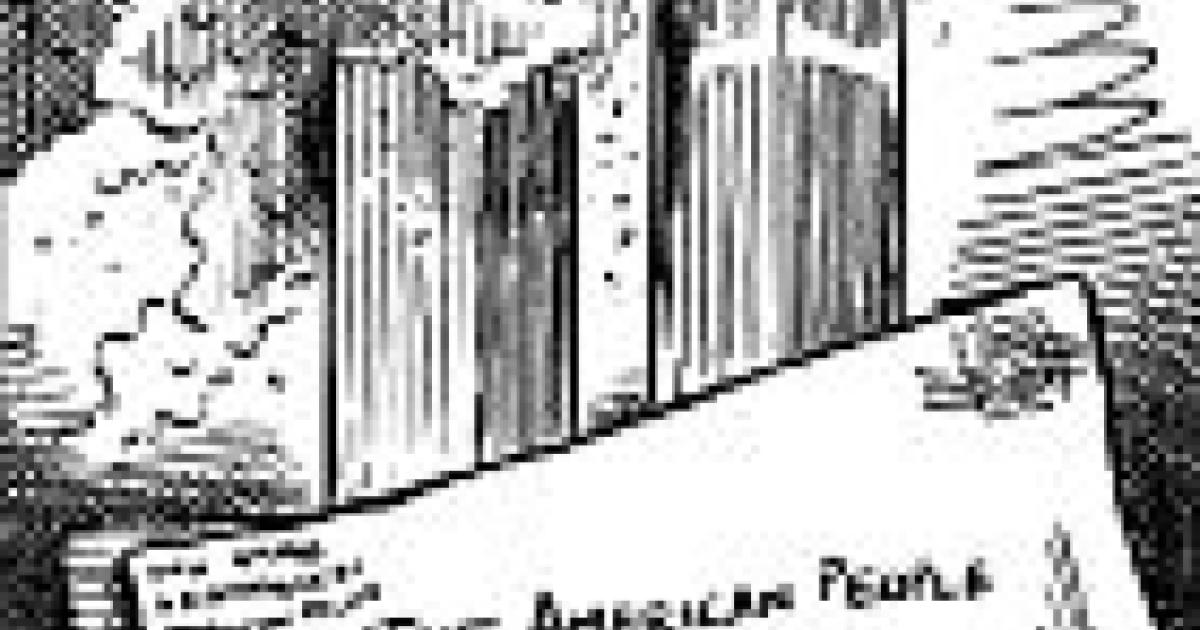- Contemporary
- Security & Defense
- Terrorism
- Law & Policy
- Civil Rights & Race
- History
Everything has changed since September 11." How
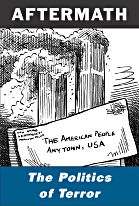
often have we heard that or thought it? And yet it seems to me that, at least in the field that I cover, American politics, September 11 has not changed everything. Of course the war on terrorism has introduced a new focus on public affairs, one on which both major parties and almost all articulate opinion are in agreement. But the disputes and disagreements on other issues continue pretty much unchanged. Support for the two major parties continues at about the same levels, with the most even division between the two parties since the 1880s.
But when I look beyond or beneath partisan politics, I think the war has in fact made major changes that are likely to be of enduring importance. I think it has strengthened two powerful and underlying trends in American society, trends that are often unnoticed or unremarked upon but that have been changing American politics and government in the past two decades and are likely to change them even more in the years ahead. And I think both of those trends have been moving—and will continue to move—in the opposite direction from that which elite liberal opinion believes.
Elite liberal opinion takes the view that this war, like all other wars, will move America toward a bigger, more centralized government. I believe that the war will strengthen the existing tendency away from bureaucracy and toward markets, toward more decentralized government.
Elite liberal opinion has also been trumpeting that we are becoming for the first time a multicultural, multiracial society. I believe the war will increase the idea of a common citizenship and the awareness that our differences in ethnic and racial origins and in cultural attitudes are less important than our common citizenship.
Let me take both points in turn.
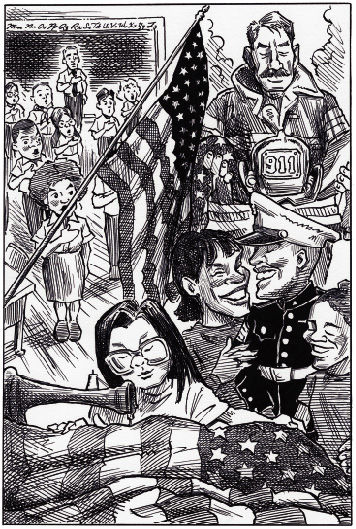 |
| Illustration by Taylor Jones for the Hoover Digest.
|
Big Government Keeps Getting Smaller
I start by examining whether this war, like others (most notably World War II), will increase the demand for big government. I think it will not because government tends to take on the character of the larger society. And the larger society is becoming more, not less, decentralized: a society that is moving toward markets and away from bureaucracy, toward decentralized choice and accountability and away from centralized command and control.
In this respect, America is returning to its basic character. For it’s my contention that current post-industrial America more closely resembles Tocqueville’s pre-industrial America than the industrial America in which most of us grew up.
Industrial America was Big Unit America, a nation dominated by Big Government, Big Business, and Big Labor. The leaders of these big units made decisions and deals among themselves and then gave orders to the millions of Americans in the ranks below them. This was a nation in which economic production was increasingly governed by the time-motion studies of Frederick W. Taylor, who saw workers as unskilled, interchangeable parts whose job was to perform their tasks as required by experts in charge of the centralized big units. People took pride in being small cogs in large machines. This was an America of people in uniform, in which almost all young men spent years in the service; it was an America in which people were conformists, organization men, average guys and gals.
It was Big Unit America that won World War II. This was a war won by 12 million Americans under arms—one-quarter of the number of Americans employed the year before Pearl Harbor—and by the mass production of relatively simple machines. It was a war in which the government absorbed 45 percent of the gross domestic product (with 80 percent of that spent on defense). It was a war in which the government rationed coffee and sugar, gasoline and rubber; in which the government ordered factories converted to defense production; in which the government set wage and price controls. This was a triumph of industrial Big Unit America, a triumph produced by large organizations operating under centralized command and control. It was a triumph that gave Americans an appetite for bigger government, and politicians of the postwar period gave us bigger and bigger government—bigger by far than the government of the New Deal.
|
"The war on terrorism is likely to increase the awareness that our racial, ethnic, and cultural differences are less important than our common citizenship." |
For some years Big Unit America performed well, winning the war and building a prosperous postwar America. But after a time the big units started performing poorly. Big government gave us urban riots, the Vietnam War, and inflation. Big business gave us planned obsolescence and blundering corporations. Big labor stopped growing and began to shrink into a few industrial redoubts and the public sector.
In response America changed. Over the 1970s and 1980s and 1990s we became a nation more like Tocqueville’s America: decentralized, individualistic, culturally various, property-loving, religious. We have moved from bureaucracy to markets, from regulation to competition, from centralized command and control to decentralized choice and accountability. This change was not immediately recognized or everywhere welcomed. Twenty years ago elite opinion held that history was progress from small organizations to large organizations, from small government to big government, and that this movement was inevitable; it could be delayed but never reversed. And if the big units produced stagflation—low economic growth and high inflation—and an America that was beleaguered and in retreat abroad, then the public should just grow up and be pleased with the best the centralized experts could produce and accept that in this complex world nothing better was possible.
But in the meantime the economy was being revived by cuts in taxation, by the deregulation of transportation (advocated by the young Ralph Nader and initiated by Democrats such as Jimmy Carter and Edward Kennedy) and of communications and finance. Private sector innovations such as leveraged buyouts and junk bonds made the managers of large corporations far more accountable and responsive to the marketplace. Small businesses created innovative products and services and displaced lumbering corporate dinosaurs, in which workers made their own deals with employers rather than rely on the leaders of big labor unions. Defined-benefit pension plans, which assumed that workers would stay with one employer over a lifetime and would depend on it for retirement income, were replaced by defined-contribution plans, which assumed workers would move from employer to employer and could be trusted to make choices on their own. Small, flexible, supple organizations outperformed and were more creative than large, inflexible, lumbering organizations.
|
"America is returning to its basic character. We are moving toward markets and away from bureaucracy, toward decentralized choice and accountability and away from centralized command and control." |
Over time, government tends to take on the character of the society; the public sector comes to resemble the private sector. So over the last 20 years we have seen movement, some of it still nascent, toward substituting decentralized choice and accountability for command and control. The great public policy successes of the 1990s—reducing welfare dependency and reducing crime—were the result of initiatives taken locally, starting with Tommy Thompson’s welfare reform in Wisconsin in 1987 and Rudolph Giuliani’s crime control in New York City in 1994, which were then initiated and adapted in other states and cities. Both policies involved giving individuals a wider array of choices and holding them accountable for results in ways they hadn’t been before. Similarly, in education we find that localities and states have pioneered in giving individuals more choice and holding them accountable; George W. Bush’s education reform, passed late in 2001, is an extension of those policies to the federal level. Health care has been reformed not by the centralized command-and-control model advocated by Hillary Rodham Clinton—roundly rejected in the political marketplace—but by a variety of initiatives in the private and public sectors that give people more choices and hold them accountable. And now the military has responded in the same way.
|
"Over the last 30 years we have become a nation more like Tocqueville’s America: decentralized, individualistic, culturally various, property-loving, religious." |
Since September 11 many commentators have speculated—some gleefully, some with dismay—that the war would strengthen support for big government. Historically war has indeed been the great friend of the state. But consider how this war so far is being won. It is being won not by lumbering infantry but by high-tech machines and high-skill special forces. Precision bombing and real-time communication have been far better in Afghanistan than they were even in the Gulf War. The military has incorporated the high-tech revolution that has been the work primarily of the private sector. Special forces or CIA agents on the ground, with skills every bit as impressive as those of private sector techno geeks, were able to relay, via global positioning satellites, the coordinates of enemy troops and equipment to fliers of 40-year-old B-52s, who were able to rain bombs in exactly the right place. Old cargo planes and navy fighters were adapted to be used as bombers. B-2 bombers flew round trips from Missouri to bring American power to bear in Afghanistan. The military has shown the kind of adaptability and expertise we have seen in the private sector over the last 20 years.
And all this has been done at a relatively low cost. The military in World War II absorbed 36 percent of gross domestic product. The military in 2001 absorbed just 2.9 percent of gross domestic product. Assume this rises in years ahead to 4 or 5 percent; that will still be below the percentage of gross domestic product absorbed by the military in the peacetime years in the middle 1980s or the early 1960s.
The American triumph in World War II was a triumph of industrial America—a military of 12 million men and mass production of relatively simple machines. The American triumph in the war against terrorism is the triumph of post-industrial America, a triumph of high-tech machines and high-skill individuals, people acting with a wide array of choices and initiative and a high degree of accountability.
|
"The military in World War II absorbed 36 percent of gross domestic product. The military in 2001 absorbed just 2.9 percent of gross domestic product." |
It seems to me exceedingly unlikely that the American people will conclude from our success in this war that we should return to a public sector characterized by centralized command and control. Rather, I think it likely they will conclude that we should continue to move toward a public sector characterized by choice and accountability. George W. Bush seems to understand this. His domestic policies—on taxes, education, Social Security, medical care—are all policies that increase the amount of choice and accountability in our society. And he understands, as his father in 1991 and 1992 did not, how to make a connection in the public’s mind between the way we have won a war and how we should govern ourselves in peace. We have seen a diminishing demand in post-industrial America for the big government initiatives for which there was a big political demand in industrial America. We have not seen major increases in the percentage of the private economy devoted to government. We have seen the Republican Party win most of the presidential elections since 1968; the only Democrats elected (Jimmy Carter and Bill Clinton) ran as "new Democrats" sympathetic to the changing character of the country. We have seen Republicans finally triumph over the Democrats’ institutional advantage and win control of Congress in the 1990s. I do not believe that the war against terrorism will prompt a change in the direction of this trend. I think it will continue and perhaps apace.
One Nation—Indivisible
America in recent years has been very sharply and very evenly divided politically, primarily along cultural lines. Look at the numbers. In 1996 Bill Clinton was reelected with 49 percent of the vote; the Republicans held the House with a popular vote of 49 to 48.5 percent. In 1998 the Republicans held the House with a popular vote of 49 to 48 percent. In 2000 George W. Bush and Al Gore each won 48 percent of the vote; the Republicans held the House with a popular vote of 49 to 48 percent. We have had three straight presidential elections and three straight House elections in which neither party has won 50 percent of the vote. This hasn’t happened since the 1880s.
And the divisions today, as in the 1880s, are along cultural lines. In the 1880s the Democratic Party was supported chiefly by southerners and Catholics. The Republican Party was supported by northern Protestants. You voted as you fought or according to where you came from. Today, the deepest divisions are along the lines of religion. Evangelical Protestants and Mormons voted overwhelmingly for George W. Bush; Jews and those with no religion, overwhelmingly for Al Gore. People who attend religious services at least weekly gave Bush a considerably larger margin than did the wealthy. People who attend religious services less often or not at all gave Al Gore a similar margin. The issues that really divide people are abortion and gun control, not tax cuts. And those divisions were exacerbated by the controversy over Florida’s electoral vote because the arguments were congruent with the bedrock attitudes of both parties’ constituencies. The Republicans in Florida argued that you should obey the rules, not change them in the middle of the game. The Democrats in Florida argued that you should change the rules because they were unfair to certain people in certain circumstances. No wonder the debate was so bitter: Neither party had to argue (as both surely would have, had it helped their cause) against the grain of its underlying attitudes.
Since September 11, despite George W. Bush’s continuously high job ratings, there has been very little if any change in the narrow electoral margin between the two parties. The special elections held this fall and winter and the November elections in New Jersey and Virginia pretty closely tracked the 2000 election results. Multiple polls taken at the beginning of the year suggest that Republicans are just slightly stronger today (by one to three percentage points) than on September 10. But this change, if it is a change, is not necessarily permanent. I think it’s prudent to conclude that the country remains closely divided along partisan lines, as it has been for the last half-dozen years.
|
"America in recent years has been very sharply and very evenly divided politically, primarily along cultural lines. We have had three straight presidential elections and three straight House elections in which neither party has won 50 percent of the vote. This hasn’t happened since the 1880s." |
But something did happen on September 11. Democrats and Republicans, red states and blue states, Christian conservatives and cultural liberals (with just a few exceptions, mostly in isolated corners of university campuses) reacted the same: WE have been attacked. Republican and Democratic leaders of the House of Representatives, men who had barely been speaking to each other, watched the September 11 attacks on television together and could see that we were all reacting the same way: WE have been attacked and WE must respond. The nearly unanimous support Democratic and Republican politicians have been giving to George W. Bush’s conduct of the war against terrorism is, I believe, sincere and deeply felt.
And that feeling has prevailed among Americans of different races and national origins. This is important to understand, for in recent years many have been saying that we are at a whole new place in our history, that America is becoming for the first time a multiracial, multicultural nation in which people will live in separate boxes—whites, blacks, Latinos, Asians—a nation where, some people hope, so-called minorities will take an adversarial attitude toward what has been the larger society.
I think this view misses a very large part of American history; in fact, I feel this so strongly that I went to the trouble of writing a book, The New Americans (published in May 2001). My thesis is that minority groups of today resemble immigrant groups of 100 years ago—blacks resemble the Irish, Latinos resemble Italians, and Asians resemble Jews. A hundred years ago many people said these races—they called the Irish, Italians, and Jews different "races"—could never be interwoven into the American fabric, could never be Americans. Today we know those predictions turned out to be false. Today we hear predictions that these new Americans—blacks (whom I call "new" Americans only because they did not get their full rights as citizens until the 1960s), Latinos, and Asians—can never be interwoven into the American fabric, can never become Americans. I believe that those predictions too will prove to be false, if we learn intelligently from the lessons of the past. We are not doomed to be a nation in which people live in separated racial boxes, snarling at each other. We are a nation that more than any other has the capacity to take new people in and make them part of an America that is stronger for their presence.
|
"Those who would keep us apart, in separate boxes, have this country all wrong." |
And I believe we can see that from what has happened in America since September 11. The attacks on America have produced an enhanced sense of common citizenship. We recognized instantly that for all our differences on cultural issues—and they are differences based on deep-seated moral values in many cases—we also share a common belief in basic American freedoms and in the decency of American life.
Take a look at the obituaries in the New York Times of the people who died in the attacks on the World Trade Center, or of those who died at the Pentagon or on United flight 93. These were all kinds of people, from all kinds of backgrounds, with all kinds of cultural and political values. But they were also Americans.
And remember September 14, when George W. Bush came to Ground Zero in New York. Someone shouted, "I can’t hear you." Bush grabbed a bullhorn and said, "I can hear you. The whole world can hear you. And the people who knocked down those buildings will hear from all of us soon." And immediately the rescue workers began chanting, "USA! USA! USA!" Look at their faces on videotape. They come from different backgrounds and are members of what we call different "races" (though we know from history that what people consider different races changes over time). Their responses and the responses of those of us who were watching on television were the same. We recognized instantly that our differences bind us together; they make us the same.
Those who would keep us apart, in separate boxes, have this country all wrong. However different our backgrounds and attitudes, we are more than ever one nation, a proud and free post-industrial America, more productive and more tolerant, more creative and more welcoming of newcomers, than any nation that has ever before existed.








